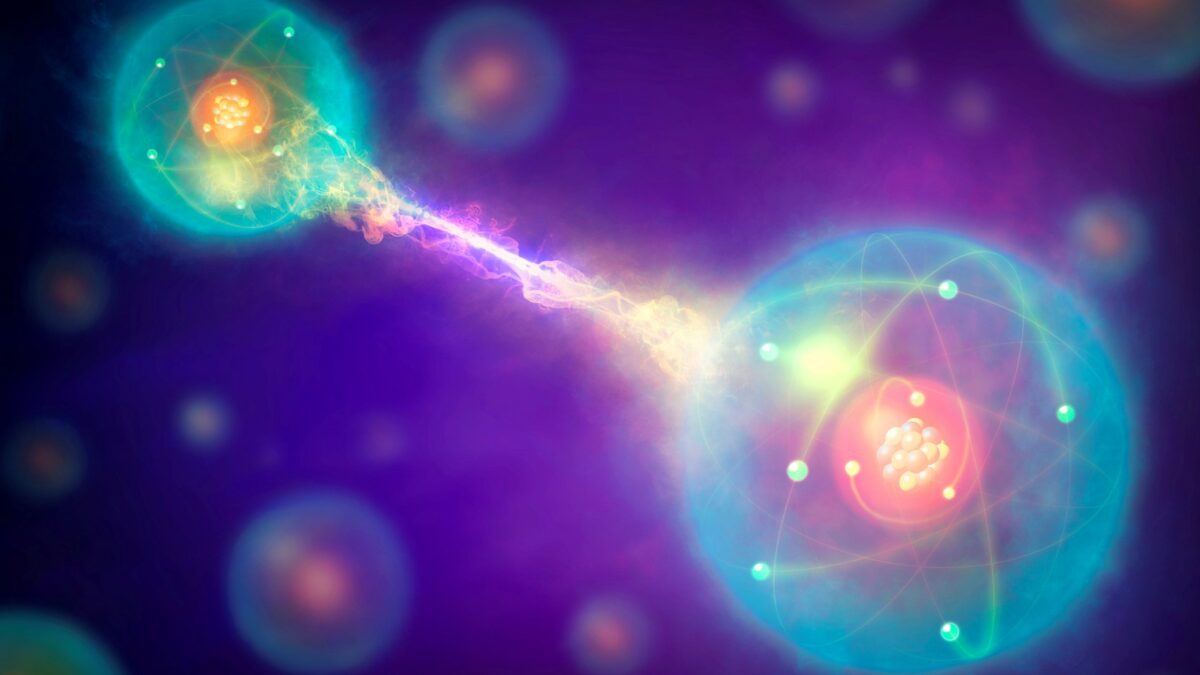Introduction:
Quantum entanglement, a phenomenon first described by Albert Einstein as “spooky action at a distance,” is one of the most intriguing and mind-bending aspects of quantum mechanics. This article delves deep into the science behind quantum entanglement, exploring its theoretical foundations, experimental validations, and the profound implications it holds for our understanding of the nature of reality.
I. Theoretical Foundations of Quantum Entanglement:
A. The Quantum State:
- At the heart of quantum mechanics is the concept of a quantum state, describing the properties of a quantum system.
- Quantum systems, such as particles or atoms, can exist in multiple states simultaneously, a phenomenon known as superposition.
B. Entanglement Defined:
- Quantum entanglement occurs when two or more particles become correlated in such a way that the state of one particle instantaneously influences the state of another, regardless of the distance between them.
- Entangled particles lose their individuality, forming a single quantum system that behaves as a unified entity.
C. Bell’s Theorem and Inequality:
- Physicist John Bell formulated a theorem to test the predictions of quantum entanglement against classical physics.
- Experimental violations of Bell’s inequalities have provided strong evidence supporting the reality of entanglement and challenging local realism.
II. Experimental Verifications of Entanglement:
A. Aspect Experiments:
- In the 1980s, Alain Aspect conducted groundbreaking experiments that demonstrated entanglement’s non-local nature.
- Aspect’s experiments involved measuring the polarization of entangled photon pairs, confirming correlations beyond what classical physics could explain.
B. Quantum Entanglement in Particles:
- Quantum entanglement has been observed in various particles, including electrons, atoms, and ions.
- Experiments involving entangled particles separated by large distances have consistently validated the instantaneous correlation predicted by quantum mechanics.
C. Quantum Technologies:
- The development of quantum technologies, such as quantum key distribution for secure communication, relies on the principles of entanglement.
- Entangled particles enable the creation of secure quantum channels for transmitting information without the risk of eavesdropping.
III. Quantum Entanglement and Spooky Action:
A. Non-Locality and Spooky Action:
- Einstein famously referred to entanglement as “spooky action at a distance,” expressing his discomfort with the non-local nature of quantum correlations.
- Entanglement violates the principles of classical locality, challenging our classical intuitions about cause and effect.
B. Faster-than-Light Communication:
- The apparent ability of entangled particles to instantaneously influence each other’s states has sparked debates about the possibility of faster-than-light communication.
- However, the no-communication theorem asserts that entanglement cannot be exploited for faster-than-light transmission of information.
IV. Quantum Entanglement and Quantum Computing:
A. Quantum Computing Principles:
- Quantum computers leverage the principles of superposition and entanglement to perform complex computations at exponentially faster rates than classical computers.
- Entangled qubits enable the creation of quantum gates, forming the basis of quantum algorithms.
B. Quantum Supremacy:
- Achieving quantum supremacy, where a quantum computer outperforms the most powerful classical computers, is closely tied to harnessing the power of quantum entanglement.
- Google’s 2019 experiment claiming quantum supremacy marked a significant milestone in the field.
V. The Quantum Measurement Problem:
A. Measurement and Collapse:
- The act of measuring an entangled particle collapses its quantum state into a definite value.
- The nature of this collapse and its implications for the broader understanding of quantum mechanics remain central to ongoing debates in physics.
B. Decoherence and Quantum Interpretations:
- The phenomenon of decoherence, where quantum systems interact with their environment, plays a role in the interpretation of quantum entanglement.
- Various interpretations, including the Copenhagen interpretation, many-worlds interpretation, and de Broglie-Bohm theory, offer different perspectives on the nature of quantum reality.
VI. The Future of Quantum Entanglement Research:
A. Quantum Entanglement and Black Holes:
- Recent research explores the potential connections between quantum entanglement and the physics of black holes.
- The emergence of the “entanglement entropy” concept suggests a deep relationship between quantum information theory and gravitational physics.
B. Quantum Entanglement and Quantum Gravity:
- Bridging the gap between quantum mechanics and general relativity is a frontier in physics.
- Quantum entanglement may provide insights into the fundamental nature of spacetime and the quantum structure of the universe.
C. Practical Applications and Quantum Technologies:
- Ongoing research seeks to harness the power of quantum entanglement for practical applications in quantum communication, quantum cryptography, and quantum sensing.
- Advances in understanding and controlling entanglement hold the key to transformative technologies with potential societal impact.
VII. Conclusion:
Quantum entanglement stands as a testament to the profound and sometimes perplexing nature of quantum mechanics. From theoretical foundations to experimental validations and practical applications, the science behind quantum entanglement continues to captivate physicists and researchers worldwide. As our understanding deepens and technology advances, the mysteries unravel, paving the way for new frontiers in both fundamental physics and cutting-edge quantum technologies. The exploration of quantum entanglement remains at the forefront of scientific inquiry, promising further insights into the fabric of the quantum universe.
